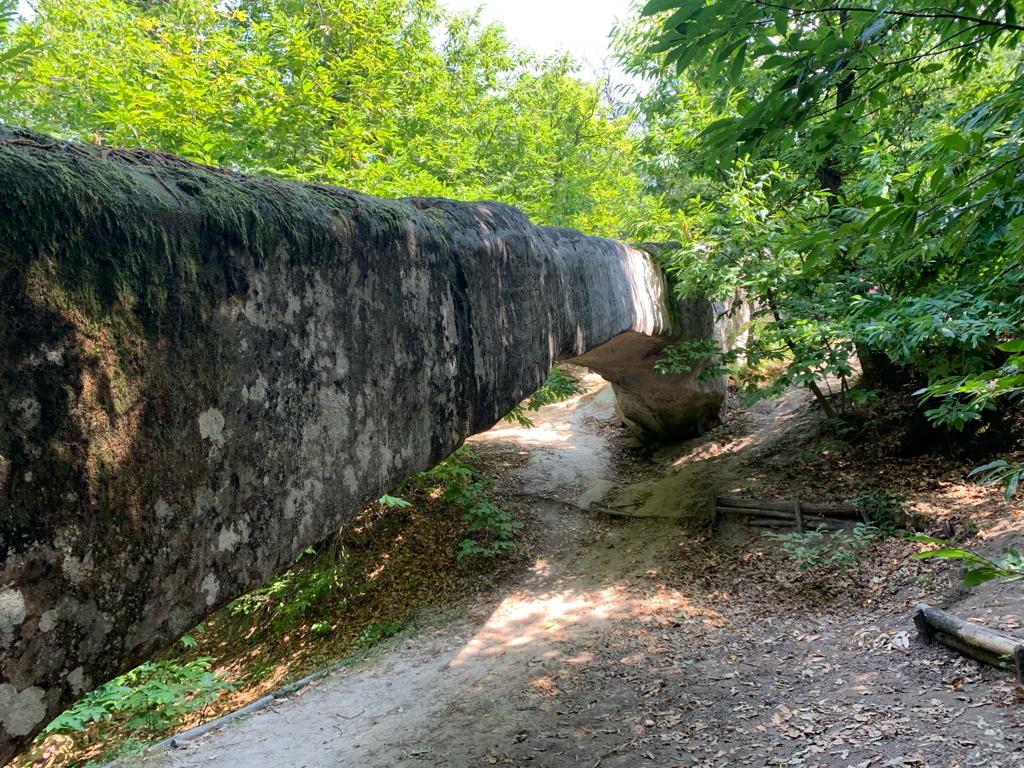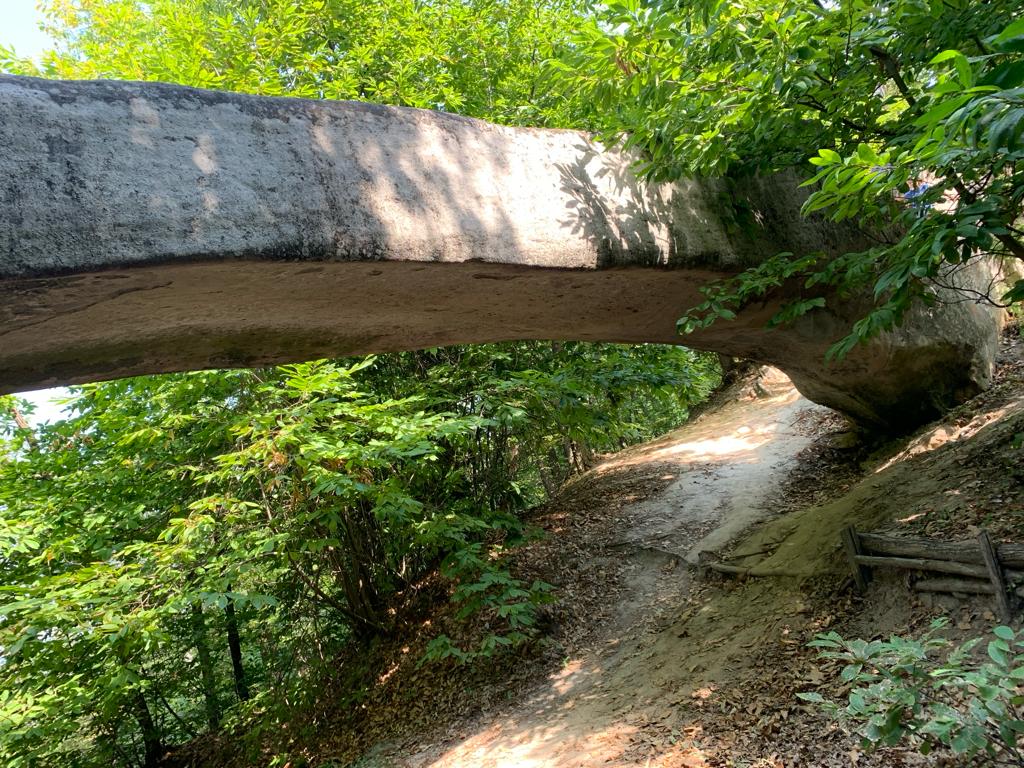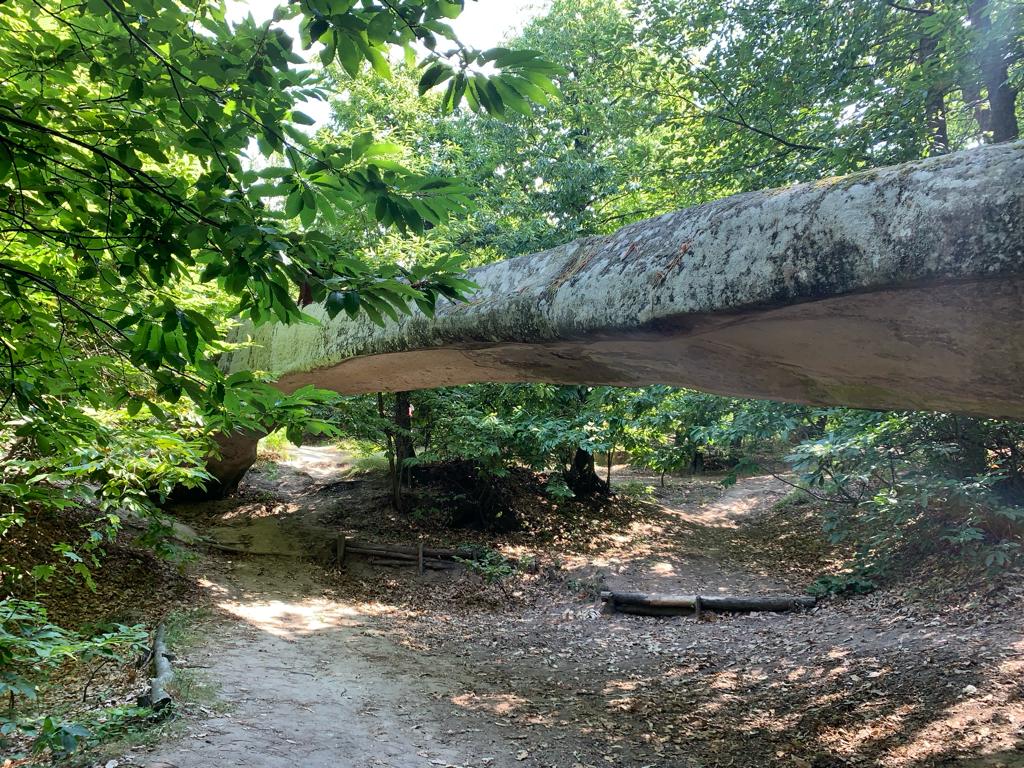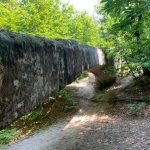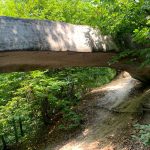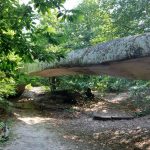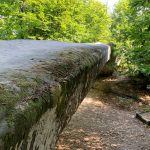Our Apennines are rich in itineraries suitable for the whole family.
Here we suggest one that takes place in the Modena Apennines, and more specifically in the Frignano Park, between Pavullo and Lama Mocogno.
It is a short and easy walk that leads to a picturesque spot in the woods that will leave both children and adults open-mouthed: it is the Hercules – or Devil’s – Bridge.
Hercules or Devil's Bridge, Modena
Hercules or Devil's Bridge, Modena
Hercules or Devil's Bridge, Modena
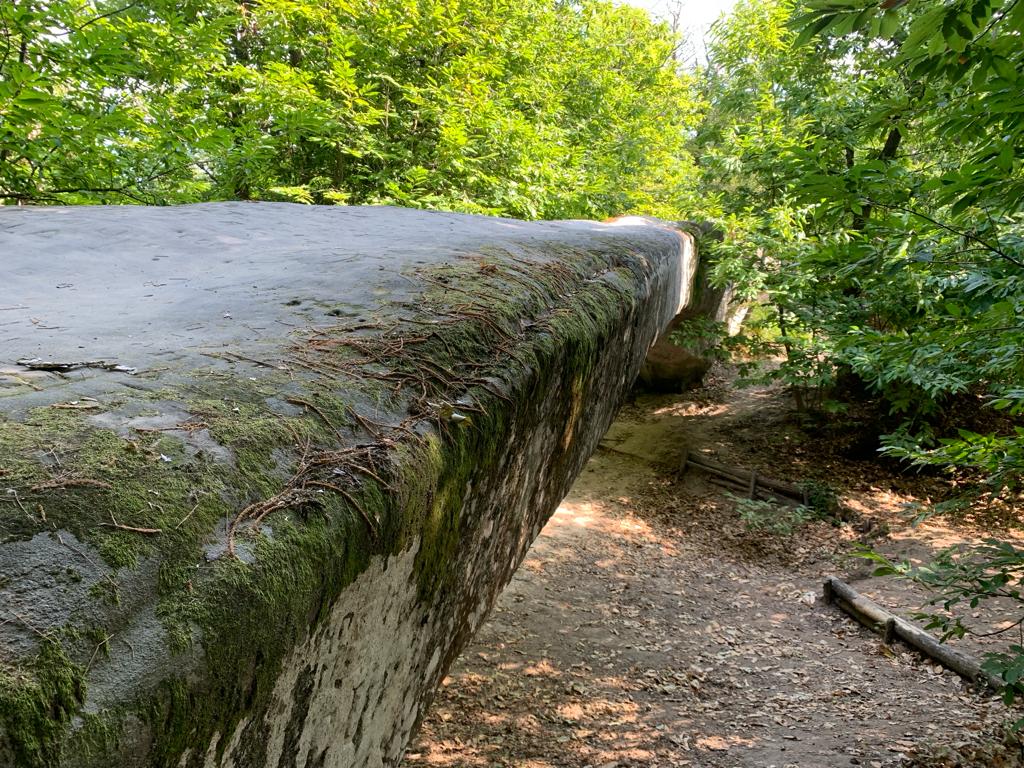
Hercules or Devil's Bridge, Modena
The Hercules Bridge is a 33-metre long natural monolith that has been formed over the centuries by erosion, creating a real bridge that can be crossed with caution.
The bridge between history and legend
The Hercules Bridge is a sandstone formation formed by the erosive action of natural forces over thousands of years.
Its striking and imposing shape has given rise to several legends about its supernatural origin.
In Roman times the bridge was called Ponte di Ercole (Hercules’ Bridge) to emphasize that only a hero with the will of Hercules could have carried such a heavy rock.
It was only in the Middle Ages that the arch became known as the Devil’s Bridge:
Legend has it that a peasant asked the devil to build him a bridge across a raging torrent in exchange for his soul.
After building the bridge during the night, Satan was distracted by a witches’ dance and was not in time to take the man’s soul before sunrise.
Since then, the devil, still angry about the incident, has punished anyone who sticks their head into the holes in the bridge by cutting it off.
These popular legends have contributed, also helped by the presence of a spring that rises from nearby Mount Apollo and flows in the direction of the bridge, to make the place a destination for ancient water-related rituals.
At the northern end of the bridge, a basin was dug by man to collect water that is thought to have been used for purifying baths, to which a healing action was attributed in antiquity.
We do not know exactly when the basin was created, but some archaeological evidence found around the bridge proves that the area has been frequented since proto-historic times, with ceramic artifacts linked to the Villanovan and Ligurian civilizations.
There have also been numerous finds dating back to Roman times (ceramics, metal and glass tools, wall remains, mosaic tesserae, as well as numerous coins) and to the Middle Ages.
The walking route
The bridge is reached by an easy and pleasant walk that leads from the car park into the woods.
To reach the car park, take State Road 12 in the direction of Abetone. After passing Pavullo and before arriving at Lama Mocogno, turn right onto Via Ponte d’Ercole, also indicated by a sign.
After leaving the car, take the path indicated by the Devil’s Bridge sign.
In the first section, the path skirts some fields on the left with a beautiful view of the surrounding valley, then enters a lush chestnut grove.
About halfway along, the path meets a crossroads, at which it is necessary to keep to the right.
Continuing along the path, you will come across more outcrops of the same sandstone that makes up the bridge, until the imposing mass of our destination appears on the left.
The majesty of the bridge charges the place with a fairy-tale atmosphere; it is like being inside the illustration of a storybook, so much that one expects a troll or a group of fairies to emerge from the surrounding trees at any moment.
To return to the car, you retrace your steps, following the same route as on the way out.
Worth seeing nearby
Returning from the walk to the Hercules Bridge, here are three more places worth a visit in the area:
Olina Bridge
This picturesque bridge over the Scoltenna torrent is over 500 years old; it was built in 1522 using the most advanced criteria for the technology of the time: a single arch with a light line, perfectly integrated into the surrounding landscape.
A curiosity of the Olina Bridge is the widening of the space between the two embankments, which allowed a wagon to move to one side to give way to an oncoming wagon.
At the top of the bridge, there is a sacred shrine, dated 1581, covered by a canopy.
Near the bridge is a small lake where you can fish and have a picnic.
The parish church of Renno
The parish church of Renno, dedicated to Saint John the Baptist, is located in a hamlet near Pavullo nel Frignano, in a panoramic position overlooking the entire Modenese Apennines.
Medieval in origin and Romanesque in structure, it was renovated and modernized in the following centuries, bringing considerable changes to the original architecture.
In the 16th century two side chapels were opened and in the 18th century the bell tower and the entrance portal were added.
A small jewel, rich in history and holiness, not to be missed.
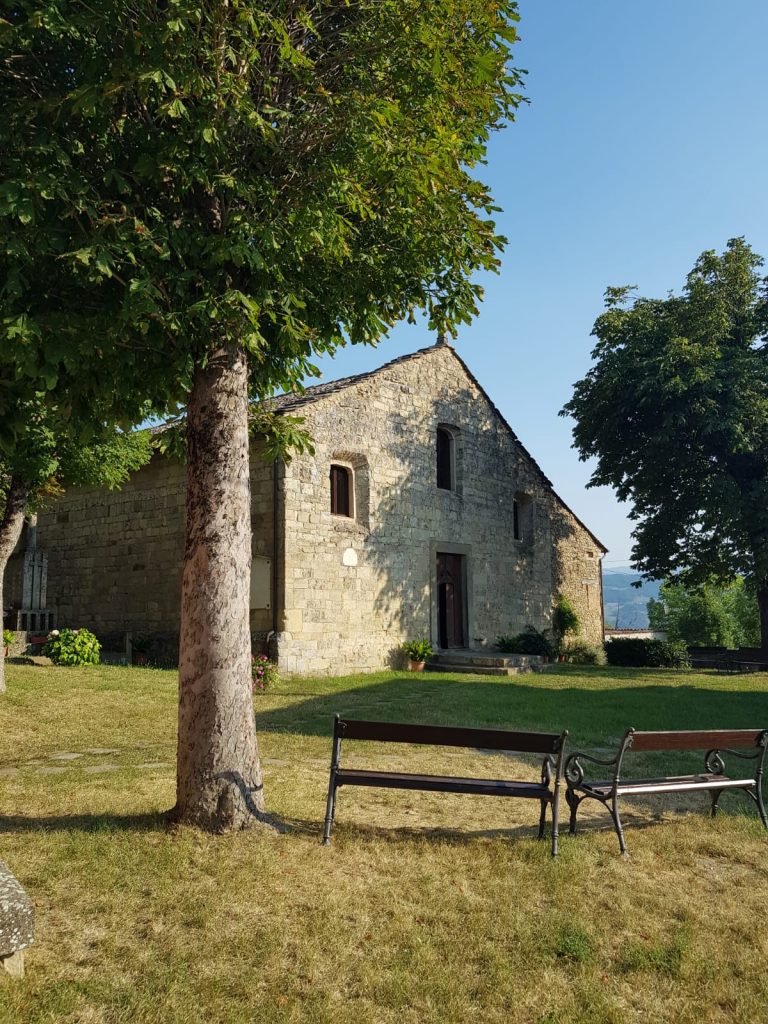
The Castle of Montecuccolo
Not far from Pavullo, on a rocky relief, stands the imposing Castle of Montecuccolo, with its long and interesting history, linked to Matilda of Canossa and the famous general Raimondo Montecuccoli.
Thanks to its exceptional strategic position on the Scoltenna-Panaro river valley where it was built, a splendid panorama can be enjoyed from the castle.
Attached to the castle is a delightful, perfectly preserved medieval village, consisting of a church and several buildings arranged around the square.
The castle, now owned by the municipality, houses several museum collections including Gino Covili’s “Il Paese ritrovato”, Raffaele Biolchini’s collection, and the Frignano Natural History Museum.
Author
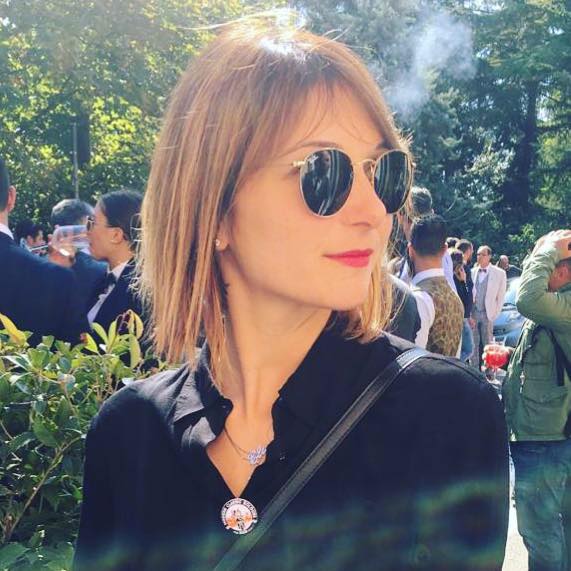
Elisa Mazzini
Social Media Manager for @inEmiliaRomagna and full-time mom.

